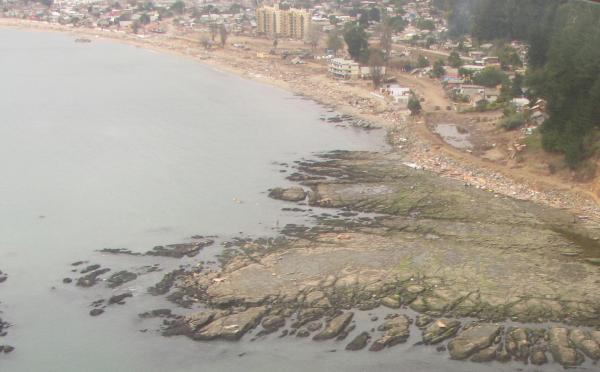
Chile Feels Aftershocks of Last Year's Massive Temblor

With five earthquakes rattling the coast over the past four days, Chileans are still feeling the aftershocks of a huge earthquake that ruptured one year ago.
A magnitude 6.8 earthquake offshore of Bío-Bío, Chile, on Feb. 11 sent thousands running for higher ground, the Associated Press reported. That quake triggered at least two dozen aftershocks, including earthquakes of magnitudes 6.0, 5.8 and 5.6, according to the U.S. Geological Survey (USGS). The rumbling continued today with a magnitude 6.6 temblor underwater near Maule, Chile.
"Chile is an active place so we always have a lot of earthquakes going on," said Don Blakeman, a geophysicist with the USGS in Golden, Colo.
That seismic activity is created as one of the Earth's rocky plates dives under another one. Near Chile, the Nazca plate is thrust under the much larger South American plate at a rate of about 2 inches (6 centimeters) per year.
Friday's magnitude 6.8 quake is thought to be an aftershock from the devastating magnitude 8.8 earthquake that struck Concepcion, Chile, last year, said Michael Bevis, a geophysicist at Ohio State University, who has studied how the earthquake last year changed Chile's coast. [See images of Chile's raised coast .]
"That's a huge earthquake, so it's going to have more aftershocks that last longer," than other, smaller earthquakes, Bevis told OurAmazingPlanet.
That quake was the fifth-largest ever recorded by modern seismology. It ruptured on Feb. 27 , killing 500 people, injuring 12,000 more and damaging or destroying at least 370,000 houses. The quake forever changed the country's landscape by raising the ground by more than 8 feet (2.4 meters) near the coast and sinking land farther inward, a study found.
Sign up for the Live Science daily newsletter now
Get the world’s most fascinating discoveries delivered straight to your inbox.
"It's not unusual for you to get aftershocks a year later," Bevis said, even aftershocks as large as the earthquake that hit Chile on Friday.
Marcelo Farias, of the University of Chile, agreed and said it was peculiar that there has not been a large aftershock from the 2010 earthquake before now. Farias was a team member on the study that measured the coast's uplift after the 2010 earthquake.
Friday's earthquake ruptured in an area between the two plates that did not release all its energy during the 2010 earthquake, so it can be considered an aftershock, Farias told OurAmazingPlanet.
As the plates continue to adjust, more aftershocks may occur. Chile's President Sebastian Piñera told citizens that, "Experts say that we may see aftershocks from that earthquake for up to five years," the Wall Street Journal reported.
Chile is known for its huge earthquakes. A nearby part of the country gave birth to the largest earthquake ever recorded a magnitude 9.5 earthquake that struck in May 1960 and killed 5,700 people. Since 1973, 13 quakes of magnitude 7.0 or greater have hit the coastal country, according to the USGS.
No damage was reported following the recent earthquakes and no tsunamis were expected since the earthquakes struck close to the Chilean coast, Blakeman said.
Reach OurAmazingPlanet staff writer Brett Israel at bisrael@techmedianetwork.com. Follow him on Twitter @btisrael.










